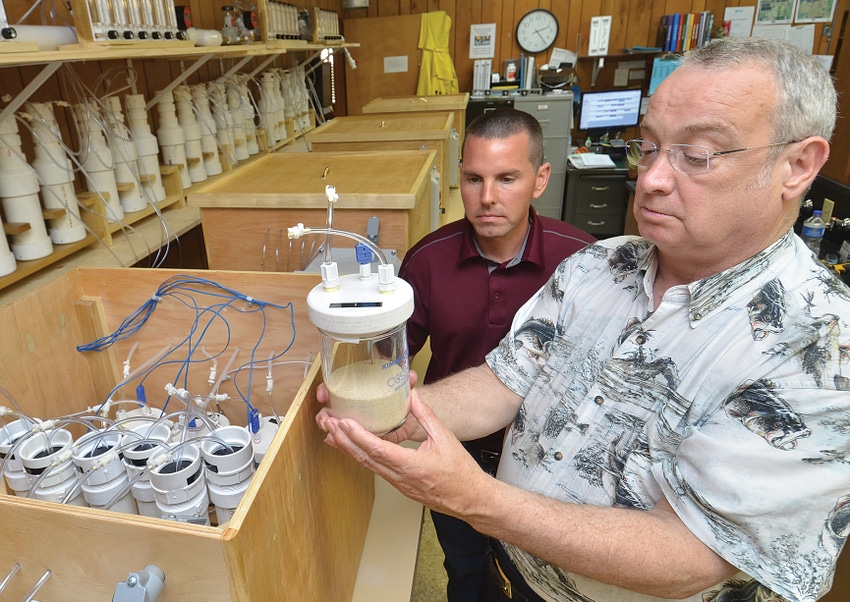August 26, 2014

An LSU AgCenter scientist now has the capability for year-round testing of fertilizer and fertilizer additives on different soils.
Dustin Harrell, an AgCenter agronomist at the Rice Research Station, said the new equipment in his lab allows him to evaluate the potential of a nitrogen fertilizer to turn into a gas, or volatilize, in a controlled environment.
Nitrogen fertilizer, one of a farmer’s main expenses, tends to volatilize when left exposed on a soil surface, and the new lab equipment can be used to test products that claim to slow the volatilization rate, keeping nitrogen in a form that can be used by plants.
“There are so many of these materials that have come out on the market in recent years that it is hard to keep up with our unbiased research and evaluations,” Harrell said. “This way we’ll be able to accurately and quickly test these materials and provide a recommendation for producers in a timely manner.”
With the new equipment, values for temperature, soil moisture and wind speed can all be controlled.
“It’s a closed system, and it’s very accurate,” Harrell said.
For several years, Harrell has been field testing urea fertilizer additives and specialized products that claim to reduce nitrogen volatility. His research has shown that some products work, but many don’t. But until now, Harrell was limited to testing volatility only during the growing season to take advantage of warm temperatures.
With the specialized lab equipment, testing can be done quickly and year-round. The first use of the equipment will be to test four prominent rice soils to evaluate the difference in volatilization potential among the soils and to determine if the effectiveness of a urease inhibitor-treated urea differs among them.
In the tests, air is continuously pumped into glass containers holding soil samples and the fertilizer products. The air flow ends in a container of acid that is used to capture the ammonia gas produced by the surface-applied nitrogen fertilizer being tested.
Field trials will still be required for testing fertilizer products in a production setting in order to correlate gaseous nitrogen losses with yield losses.
The system was made by Garnett Whitehurst, of New Bern, North Carolina, who has tested numerous fertilizer products for the forestry industry.
“It’s one of only three systems in the country,” Harrell said.
Harrell was able to buy the equipment using funds generated by his research work.
Two graduate students, Fafa Adotey and Jifeng Li, will work with Harrell on the project.
You May Also Like




